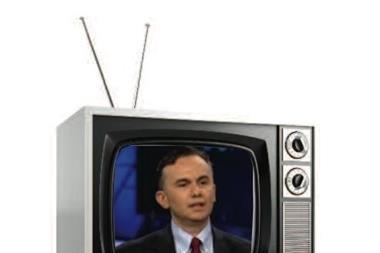Following a flurry of last-minute activity to secure lower prices in the 1 January 2010 renewals, the news is in: reinsurance rates have softened. But why is this, and what can we expect in the year ahead?
The 1 January 2010 renewals were a late renewing season. Buying continued beyond Christmas Eve and through into the week after, as some buyers held out right up to the last moment. And in some cases, they were indeed able to persuade reinsurers to take a little extra off the price. “But it was not an undisciplined renewal,” Guy Carpenter’s global head of business intelligence, Chris Klein, says.
According to Aon Benfield Analytics’ chief executive, Bryon Ehrhart, reinsurers showed “markedly less anxiety than last year” at the 2010 renewals and were “more focused on gaining the largest possible signings” on their programme authorisations.
Many contracts were oversubscribed, leading to detailed negotiations as to which reinsurers would get what amounts. In the negotiations, cedants and their brokers took into account such factors as reinsurers’ payment performance, security, as well as their own need to diversify. Less tangible factors, such as reinsurers’ loyalty during tough times, were also important.
And the headline news is that reinsurance rates softened. Guy Carpenter’s World Catastrophe Rate on Line Index declined by 6%. This index measures property cat, whereas casualty reinsurance rates were on average “flat to down 10%”, Klein says. Last year, the same property cat index was up 8%, so reinsurers have lost most of the ground they gained last year.
This raises the question of whether we are seeing a return to the soft market that began in 2006, or alternatively whether this marks the beginning of a more volatile period of ups and downs, in which persistent trends are very hard to predict.
The importance of wider economic factors to pricing in the reinsurance market supports the latter view. Pricing was firmer at 1 January 2009 not only because of hurricanes Gustav and Ike, but also because of the erosion of capital suffered by reinsurers due to the financial crisis.
Similarly, the recovery of reinsurers’ assets over the past year is an important reason for the softening at 1 January 2010, though the absence of severe hurricane losses in the 2009 season is also important, of course; there were only three hurricanes in the North Atlantic 2009 season, causing few significant losses.
Stagnation
The recovery by reinsurers has not been matched in the primary insurance sector. Willis Re chief executive Peter Hearn says: “The position is worse for reinsurers’ clients, where stagnant premium growth is pressuring expense ratios, particularly in mature markets. Reinsurers have listened to these concerns and responded sensibly with measured premium reductions.”
The softening was not universal: pricing for tornado and hail exposure in the middle of the USA hardened, and in Europe, where catastrophe pricing was on average flat to 5% lower, Austria – one of several European countries that suffered hailstorm losses – saw price rises of 20%-30%.
Whereas the North Atlantic hurricane season was benign, windstorm Klaus caused insured losses of $3.5bn (£2.17bn) in Europe, making it the most costly event of 2009. In the casualty sector, despite the general downturn, rates for financial institutions professional indemnity were up.
An interesting wrinkle was the influence of adjustments to the vendor catastrophe software models. These adjustments have decreased predicted losses for both earthquake and wind.
Looking forward
Another notable feature from the risk transfer market in general was the rush of cat bond new issues toward the end of the year, bringing total new issues to $3.4bn for 2009, which is 25% more than 2008. Pricing of cat bond new issues was cheaper in the latter part of the year. Aon Benfield calculated that, in the final quarter of 2009, spreads in the US wind and multi-peril sectors decreased by 36% and 26% respectively on a non-seasonal adjusted basis.
The reduction in pricing followed a calming among investors from the high levels of anxiety seen following the Lehman bankruptcy and in the wake of the financial crisis. Prospects for further growth in 2010 in the cat bond market are now looking good. With admirable precision, Munich Re has forecast that it is “conceivable that for 2010 the volume of new issues may be around $5bn”.
1 January was the first of four main annual renewal seasons. Most experts are currently predicting a continuation of the soft market at the April, June and July renewals; assuming, of course, that there are no large reinsured catastrophes before these dates.
Looking forward at the reinsurance industry as a whole in 2010, one of the effects of the softer reinsurance market could be increased mergers and consolidation activity. The twin spurs of low growth and strengthening capital positions could cause many chief executives to seek expansion through merger. Pointing in the same direction are the low values the stockmarket places on many reinsurers.
Share repurchases are an alternative reaction to the same set of stimuli, however. Aon Benfield forecasts that significant reinsurer share repurchases in 2010 will fall in the range of $10bn-$15bn.
One of the most exciting events of last year, from a spectator’s point of view, was the takeover battle for IPC Holdings. If we have truly entered – or re-entered – a soft phase of the market, more excitement of that kind could be on the cards for 2010.
Global risks have knock-on effects
Raj Singh has big plans. The chief risk officer of Swiss Re dreams that countries will one day have their own risk manager, someone at the heart of government who understands the way a risk in one area can trigger a crisis in another.
Governments, Singh says, still fail to spot the knock-on effects of such risks as oil price spikes, population changes and civil unrest, as they focus instead on the immediate implications.
“We need people on a government level who are looking at the interconnectivities between all these risks on a multi-lateral basis,” he warned at the launch of Global Risks 2010, the annual report from the World Economic Forum.
A recent example of interconnectivity gone wrong was the enthusiasm for biofuels. Instead of solving problems, investment in biofuels seemed to create new ones: it took land out of food production, sent food prices soaring and sparked financial turmoil and protests in the poorest countries.
Singh warns that this kind of interconnectivity is more acute than ever because the financial crisis has created a more vulnerable environment.
One of the overriding themes of the Global Risks 2010 report (see box) was the desperate need for infrastructure investment. Singh’s vision for country risk managers applies here too.
He says a global investment of $35 trillion (£21.67 trillion) is required over the next five years just to maintain infrastructure such as energy, transport and food production; $5 trillion is needed in the US alone. That includes a massive increase in agricultural output to support a global population rising by 50% to nine billion within 40 years.
“New frameworks need to be established to help governments make this kind of investment, and more institutional money needs to come in,” Singh says, adding: “Capital markets are volatile, but risk transfer allows capital to come into public-private partnerships.”
Government understanding
But Singh concedes that there are several obstacles to winning government support, even if capital providers can be persuaded to invest.
Politicians have to be persuaded of the merits of long-term infrastructure investment when their relatively fast electoral cycles make short-term investment appear more attractive. For that, they must understand the interconnected risks of failing to invest, which brings us back to the need for country risk managers.
Singh has seen examples of governments understanding the dire infrastructure requirements, as well as the need for country risk management, but progress is slow.
Germany looked likely to take the lead in country risk management, but a project to establish a government risk unit was shelved in the economic crisis as other priorities were deemed more pressing.
“It is frustrating, but we are realistic and the more we repeat this message to governments, the more we see pieces of success.” Singh said.
One can understand his frustration when a message needs to be “repeated 20 times” due to political hurdles. So having outlined the vision for country risk management in the last three Global Risks reports, Singh and the World Economic Forum might only need to wait another 17 years until the idea is adopted. IT
Hosted by comedian and actor Tom Allen, 34 Gold, 23 Silver and 22 Bronze awards were handed out across an amazing 34 categories recognising brilliance and innovation right across the breadth of UK general insurance.












































No comments yet